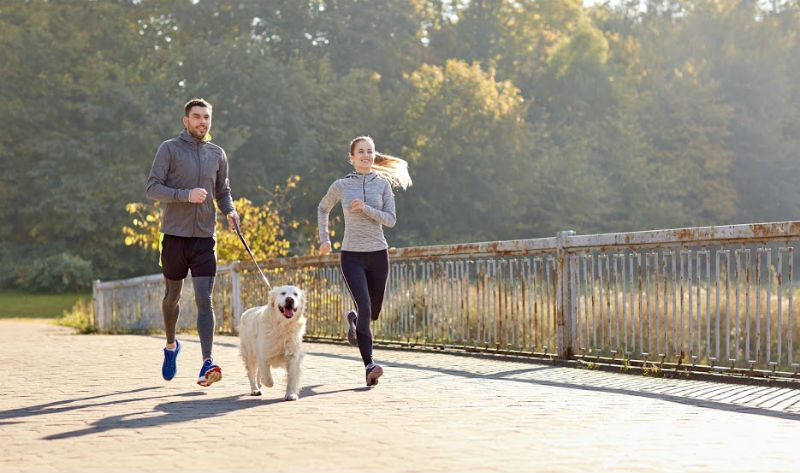Did you know that dog owners exercise on average 300 minutes per week compared to non-dog owners who exercise only 186 minutes per week? Thankfully, living on beautiful Vancouver Island, we can get outside and exercise pretty much 12 months of the year!
Don’t let the threat of winter slow you down! Now is as good a time as any to get out there and enjoy the great outdoors, savor the colors of fall and soak up the cool crisp air. There are many benefits to exercising with your pet including reducing destructive or unwanted behaviors, helping with timid or fearful dogs and improving overall health. While exercising is beneficial to all, it is important to ensure your dog is in good health prior to pursuing particular activities. As with people, it is important to avoid sporadic intense workouts and make sure you keep your animal well conditioned for activities such as biking or jogging. We have many great biking trails and off leash parks to choose from, however, be aware that not all breeds are built for these activities. Brachycephalic breeds (flat faced dogs), such as pugs, bulldogs, and shihtzus are not good candidates as they tend to overheat quickly and have difficulty breathing during this type of exercise. These breeds would prefer a leisurely stroll more than running behind a bike. Dogs should be full grown before attempting intense exercise to reduce the risk of orthopedic injuries, cruciate ligament injuries and hip dysplasia. This can be up to two years for some of our larger breeds. Once a dog reaches its senior years, (around eight years of life), osteoarthritis can cause pain and lameness and can become worse after an intense workout.
Other things to consider are the substrate you will be exercising on (gravel vs. pavement), weather conditions and water access during the activity. Avoid long walks on pavement this time of year, never bike with your dog on hot and humid days and ensure access to drinkable water when working out (ie. carry water or incorporate lakes or streams on your route). Dogs are prone to heatstroke just like humans and they won’t always tell you when it’s time to slow down or take a break.
Be aware of your dogs’ abilities and limitations. Not all dogs can be safely trained to run alongside their owner while biking or jogging. In the wrong environment and with an unsuited dog accidents may happen, potentially causing injury to both dog and human. If your dog is lagging behind, then slow down or rest. All dogs, including working dogs, are built for short intense bursts of speed with frequent stops for sniffing, eliminating and drinking. If he seems stiff or sore after particular activities then it is best to have him assessed by your veterinarian and you may have to modify your exercise routine.
Running and biking with your dog can be a fantastic way to spend time together but be sure to observe him when you are on the trails. Let your dog set the pace and enjoy the scenery.
Written by Van Isle Veterinary Hospital




